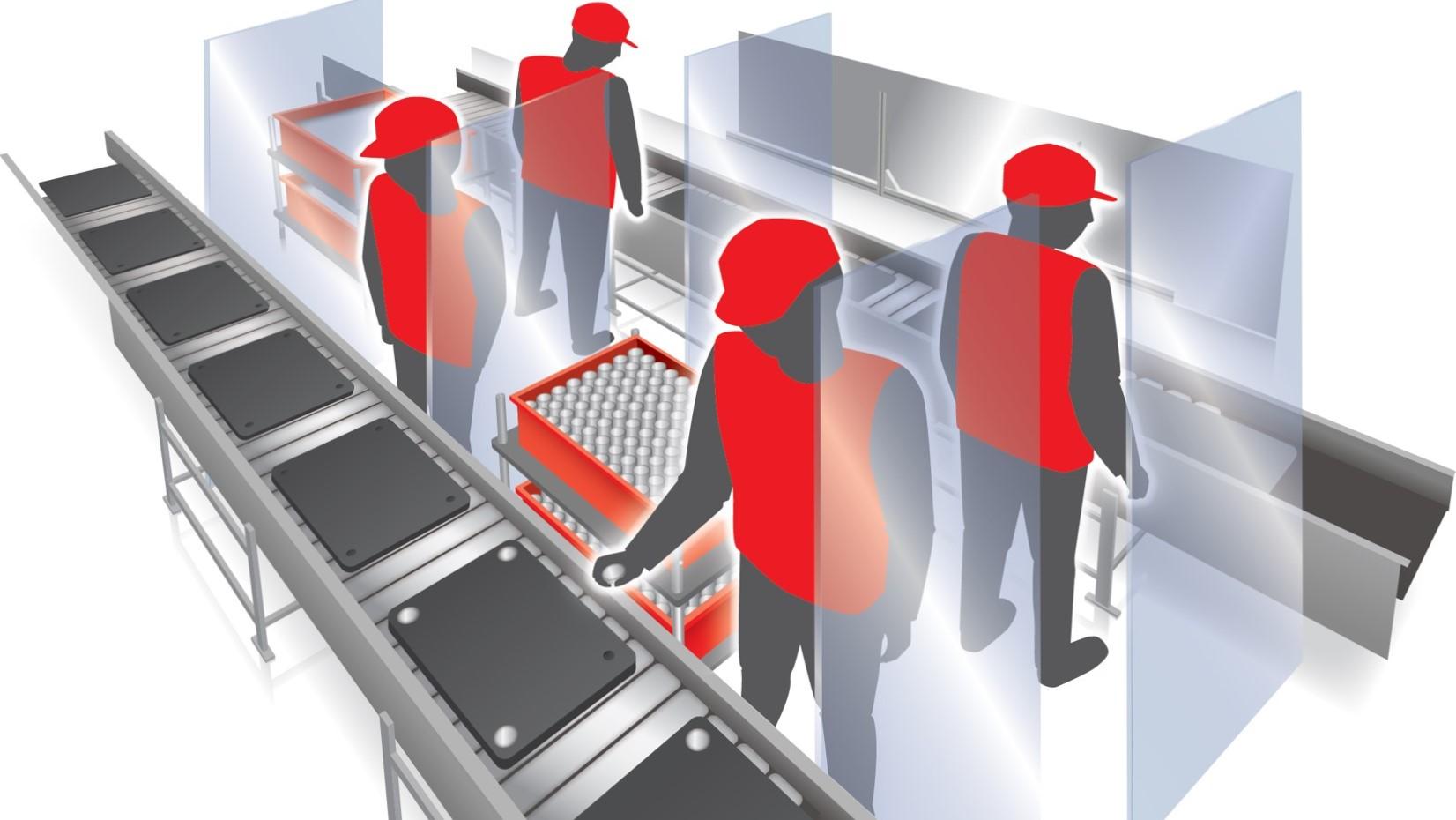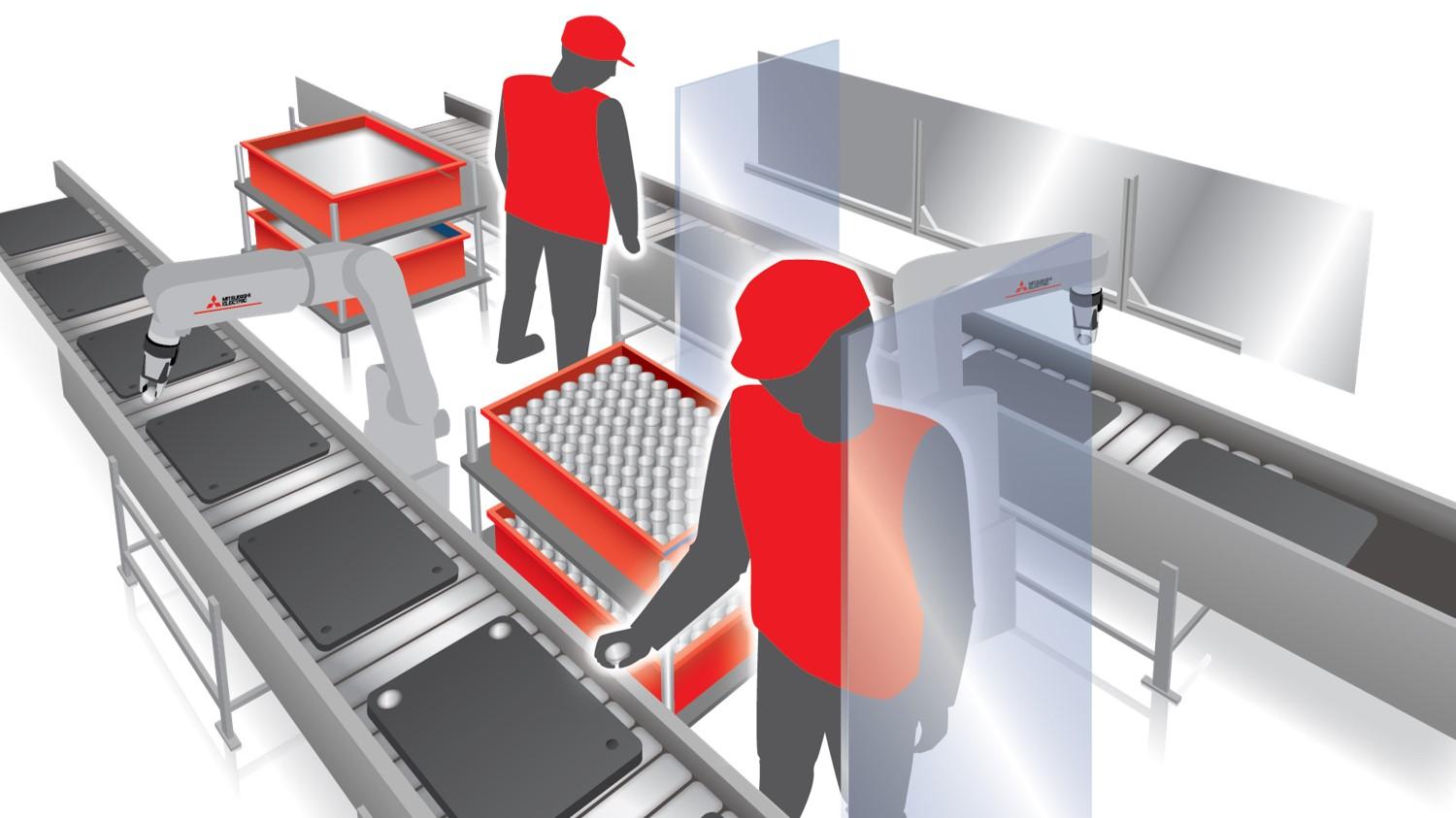Social distancing, protecting employees, restarting operations and machines, and catching up on supply chain gaps are most important aspects of the New Manufacturing Norm. Manufacturers are experiencing a lot of additional challenges and to top it all many are facing reduced budgets. So how does one navigate the new manufacturing norm?

“As an initial quick fix to social distancing in a factory, individuals could use face guards and masks. Manufacturers are now trying to adapt to the changes in conditions, especially in two major aspects,” said Hajime Sugiyama, Industrial IoT Evangelist of Factory Automations Systems Group, Mitsubishi Electric Corporation.
 The first challenge is to implement social distancing in a factory. Starting with the individual we can all imagine the use of face guards and masks, and indeed many industries have traditionally used PPEs (Personal Protection Equipment), but this was driven from a hygiene or clean environment standpoint for industries producing such things as food, drugs or even sensitive electronics and semiconductors.
The first challenge is to implement social distancing in a factory. Starting with the individual we can all imagine the use of face guards and masks, and indeed many industries have traditionally used PPEs (Personal Protection Equipment), but this was driven from a hygiene or clean environment standpoint for industries producing such things as food, drugs or even sensitive electronics and semiconductors.
But PPE is not necessarily desirable in all industries. For example, in hot or humid environments the act of wearing a mask may increase risks of heat exhaustion, so care must be exercised in understanding the worker´s environment. Some plant managers are considering using screens between workers, but this is also not a panacea as there potentially can be space and restricted movement issues as well as possible problems around access to emergency devices (E-STOPs) or reporting/controlling devices or simply visibility challenges.
Stepping back from the individual challenges, Sugiyama elaborated, “Many manufacturers are focusing on social distancing through shift management. For shift management, you need to balance work shifts so that fewer people are working together at the same time to prevent a pandemic situation inside the factory. But this presents a whole new set of challenges.” While balancing shift patterns provides factory managers with a level of operational redundancy, i.e. if one shift needs to be suspended due to infection, the second and/or third shifts can continue business as usually after the plant has had a thorough cleaning. It is a natural consequence that less people working will naturally lower the productivity. So how do you counter that?
According to Sugiyama, building extensive automation solutions takes a great deal of time, budget, and planning and in these times when manufacturers want to get up and running quickly and flexibly all three resources are likely to be in short supply. So, what´s the alternative?

Let your Co-bot take the strain
One possible solution is the increased use of industrial collaborative robots like Assista. Typically, these light devices can be quickly deployed, are human friendly and so flexible that they can be quickly trained to do a variety of tasks, i.e. you do not need to have extensive robotics expertise. And probably a key deciding factor is that overall, they are very cost effective. Enhancing the co-bot solution further with AI driven environmental management software as seen with solutions such as e-F@ctory Alliance partner Realtime Robotics reduce programing burdens even further and offer live travel path adaption so that the robot can dynamically navigate around obstacles such as humans, other robots and alike.
Remote is not just for homeworkers
Returning to full operations, restarting processes and lines often reveals underlying problems which were not previously visible and creates a maintenance nightmare of unquestionable proportions. Remote access is a key benefit but if the device you are accessing is not intelligent, the value is drastically reduced as the amount of information is restricted. However, if you are lucky enough to be using intelligent automation devices which have degrees of self-determination and extensive diagnostics resolving maintenance issues can be accelerated. But aren´t all automation devices intelligent?
“While the essential product performance/function maybe similar, you would be mistaken if you thought that all products are equal for example, it is not really true to say ´a drive is a drive, is a drive,” stated Sugiyama.
Traditional users of Mitsubishi Electric´s inverters will be familiar with simple features such as a 3-wire fan, the significance of which only becomes apparent in times like now. The benefit being the ability to diagnose the health of the cooling fan, which in turn helps extend the life of the inverter. In more recent products there are unique environmental sensors on the circuit boards to detect effects of corrosive or polluted atmospheres which is complimented by the merging of communications, intelligence and AI through the inverter hardware and partner software to provide advanced maintenance diagnostics.
He further elaborated, “Advances in product technology are not limited to the ´external function´ of the device but also in how its operational life is managed and that means maintenance and performance KPIs - but such knowhow cannot remain locked up inside the product and really excels when it can be remotely accessed by the maintenance teams.”
IIoT, Industry 4.0, etc. have already been talked about for years, but at their core is the process of communication, extraction of data and subsequent analytics. However, often when plant managers consider remote access solutions they quake in their shoes as they contemplate a large, extensive SCADA system and all its associated paraphernalia. It is true these comprehensive systems are excellent for capturing vast amounts of data, providing alarming and analytics and reviewing historical data but as mentioned earlier they do take time to correctly plan and install. Other, quicker solutions can be remotely, but directly, connecting to an HMI device on the shop floor to mimic the local screen or accessing data over a wireless interface to finally the more recent trend towards utilizing Edge controllers.
So, what is the new Norm? To Sugiyama, “A practical approach is critical. Sometimes the answer is simply a partition screen, other times it is an investment in a co-bot, but the watch words are flexibility, scalability and results focused. So maybe the new norm is actually reminding us to identify what is important.”
For more information: www.MitsubishiElectric.com
www.MitsubishiElectric.com/FA